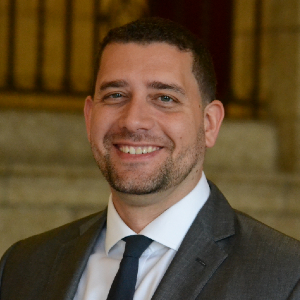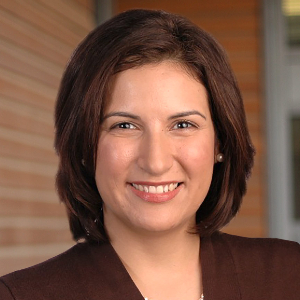By Janessa Sambola-Harris
AALS sections provide opportunities for law school faculty and staff to connect on issues of shared interest. Each of the associations 104 sections is focused on a different academic discipline, affinity group, or administrative area. For a full list of sections and information on how to join, please visit aals.org/sections.
As part of the ongoing “Spotlight on Sections” series, AALS sat down with the leadership of the Section on Evidence for a Q&A.
The Section on Evidence promotes the communication of ideas, interests, and activities among members and makes recommendations on matters of interest in the teaching and improvement of the law relating to evidence.
Chair: Christian B. Sundquist, Albany Law School
Chair-Elect: Jasmine E. Harris, University of California, Davis, School of Law


Jasmine E. Harris: It’s an underrated area in many respects, yet it’s incredibly important to the operation of trial and the way we think about the law. Everyone from corporate lawyers to trial attorneys has to think about the production of evidence and evidentiary rules. I have always loved rules, civil procedure, and criminal procedure–it’s the proceduralist nature in me.
One thing I love about the rules is that they can change the substantive outcome of cases. I love to bring that “a-ha!” moment to students, and to see them thinking, “Rules are important. We should be excited about rules. Rules matter.” From a scholarly perspective, the importance of evidence cross-cuts so many different substantive areas.
Christian B. Sundquist: My own interest in the field of evidence primarily stemmed from my practice background. I was engaged as a pro bono asylum attorney and as a litigator for a number of years. First and foremost, we have to consider how to establish (or defend against) the substantive claim, and whether it’s rooted in statutory law or constitutional law. I love asking that question to my students. “This is an amazing argument, but how do we actually prove this at trial?”
This is why Jasmine and I are chair and co-chair: we think alike. I have long been intrigued with how procedural (or seemingly-procedural) rules, such as the rules of evidence, impact substantive legal outcomes. Or, conversely, how substantive law informs our own construction and interpretation of procedural law, all while taking this adversarial search for the truth and justice. I try to impart that same passion for evidence with my students.
JEH: I teach the history of civil rights law, for example, through the procedural rules and the evolution of procedure and evidence. For me, it’s one of the coolest classes because I’m able to show how important these areas are to the advancement of civil rights, and how they’ve been important throughout history.
CBS: That overlap is why we collaborate often at AALS events with other sections, such as the Civil Rights, Criminal Justice, and Constitutional Law sections.
CBS: I’m just a huge evidence nerd, and I wanted to be more involved with scholars that I looked up to and that I felt were engaged in very impactful scholarship. After years of being an attendee at AALS and workshops, often centered around cutting-edge evidence issues that I know took a tremendous amount of time for the organizers to develop, I wanted to give back to the community and play a greater role in highlighting the important legal issues of the day.
JEH: I had similar reasons. As a junior faculty member, I was a little hesitant because Evidence seemed like such a heavy-hitter section. Instead, I found it was very welcoming and very open to developing scholarship and new scholarly ideas. I wanted to give back. In particular, I wanted to be a presence to help increase diversity. I know Christian feels this way as well as he is also someone who prioritizes diversity. I think the willingness of the section to be open to new ideas has been key.
CBS: We have a wonderful executive board, and we’re always trying to think deeply about timely evidence issues, which are often pressing social concerns. Our past and upcoming slate of events with AALS is a deep dive into some of the current issues impacting evidence law.
CBS: We’re doing a program [at next year’s Annual Meeting] on “Unregulated Evidence,” which I think is going to be extremely interesting. We know that the rules of evidence typically regulate the admissibility of witness testimony, documents, exhibits, and so forth, but there’s so much more that we might think of as “evidence” in a way that impacts trial outcomes. This panel is going to explore those areas of unregulated evidence, how that impacts trial, and what that means for how we structure our justice system.
We have another panel called “Aggravating Bias.” That panel is responding to an interesting and controversial development in law, asking to what extent evidence of a criminal defendant’s immigration status—such as evidence involving prosecutorial references to a defendant using terms like “illegal alien”—is allowed during criminal trials; whether at the trial phase or as an aggravating factor in post-trial sentencing.
Those panels were developed based on our thoughts about what is impacting evidence law right now. The panels from last year also reflect the consideration of important social issues that involve the rules of evidence, and how can we move the law forward in these areas.
JEH: We tend to have a pulse on what’s going on in the world of evidence beyond the section and beyond the legal academy. Many of us have been practitioners before, so we maintain that connection with the practice to inform both our teaching and our scholarship. Also, evidence law is one of those areas that cross-pollinates. The section is pointing out areas where evidence is doing more work than people realize. As Christian said, we are discussing areas like artificial intelligence from this past Annual Meeting, and immigration at this year’s Annual Meeting. We are thinking about how unregulated evidence and implicit biases operate in the courtroom. We are trying to figure out, are there ways that we could regulate this type of evidentiary bias or admissibility? Or is this part and parcel of the decision-maker’s process to come up with a verdict? It’s an exciting time, and I think the section is uniquely poised to get a sense of what’s happening in the world because of the backgrounds and the networks we bring to the table.
JEH: We have a broad array of members and interests. Given the nature of evidence, it really runs the gamut. The nice part of that is the diversity–not only in terms of substantive diversity, but also people who are thinking about this in different ways. There are folks thinking about legal theory, other folks thinking in a more concrete way, or some hybrid of both. They write a legal theory article, turn around, and then write a white paper that informs courts on the normative implications of their theories. The beauty of this section is the diversity of substance that people bring. It allows for really interesting ways to inform law and legal reform.
CBS: Our members are teachers, practitioners, and scholars of evidence law from schools across the nation, many of whom teach evidence law and/or write on evidence issues. Others may have expertise in a slightly different field, say criminal justice, and yet encounter intriguing evidence issues on a regular basis.
In terms of scholarship, we have a very welcoming and supportive culture in the section. We’ve long offered the John Henry Wigmore Award for Lifetime Achievement to honor evidence teachers and scholars, while also recognizing impactful evidence scholarship. We’ve also offered calls for papers to bring new voices on evidence into the scholarly discussion.
CBS: In terms of scholarship, we have a very welcoming and supportive culture in the section. We’ve long offered the John Henry Wigmore Award for Lifetime Achievement to honor evidence teachers and scholars, while also recognizing impactful evidence scholarship. We’ve also offered calls for papers to bring new voices on evidence into the scholarly discussion.
JEH: In terms of scholarship, we have a very welcoming and supportive culture in the section. We’ve long offered the John Henry Wigmore Award for Lifetime Achievement to honor evidence teachers and scholars, while also recognizing impactful evidence scholarship. We’ve also offered calls for papers to bring new voices on evidence into the scholarly discussion.
CBS: Attend the AALS Annual Meeting. Get to know other section members or members of the executive board. We’ve tried to create a welcoming culture within this section so that folks feel free to express their interest in getting more involved and to share ideas. We’re always open and excited to not only welcome new members, but also to hear their ideas.
CBS: We have a great year planned thanks to our dedicated executive board, who have been engaged in thinking deeply about evidence issues, possible speakers, and what panels may be very exciting to offer in 2020-2021. In addition to the various activities that we’ve already noted, such as the Wigmore Award, the newsletter, and so forth, our goal is to offer intriguing discussions on diverse evidence issues.
JEH: We are also trying to get an exam database operational this year, and trying to pool resources from this incredible membership body. I think that will be a great resource and a draw for new or junior faculty members who are looking for those resources, but also want access to mentors who might be able to help them think about structures. Senior faculty are also thinking about how to creatively present materials. Now in the age of Zoom and telelearning, I think we’re going to be relying on innovation from our membership even more.